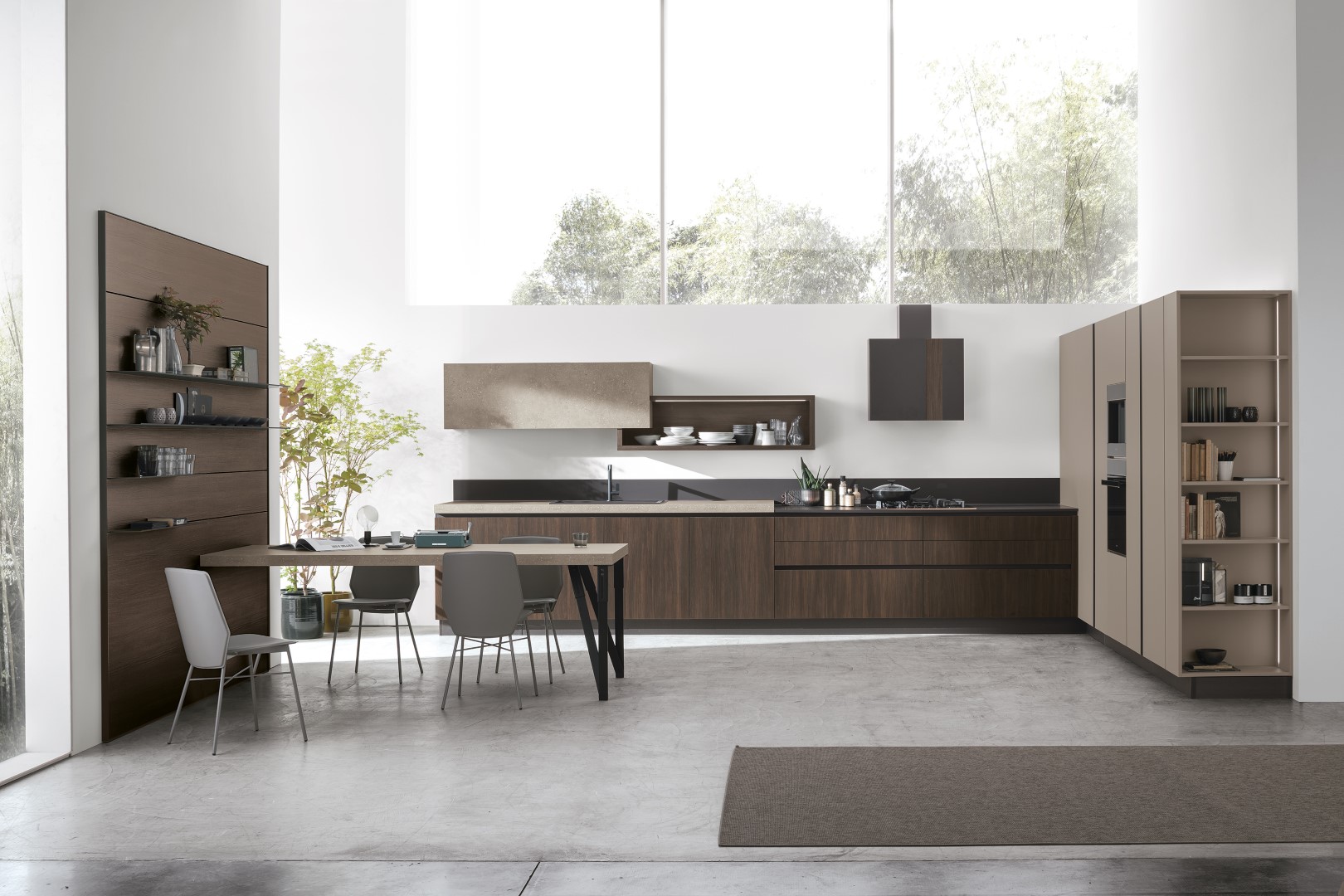
Maximizing Small Kitchens: Space-Saving Design Hacks
In today’s urban living environments, small kitchens are becoming increasingly common. However, limited space doesn’t have to mean limited functionality or style. With the right design hacks, you can transform your compact kitchen into a highly efficient and aesthetically pleasing space. This article explores various strategies to maximize your small kitchen, from clever storage solutions to multifunctional furniture.
Understanding the Challenges of Small Kitchens
Small kitchens often present unique challenges, primarily due to their limited space. According to a study by the National Kitchen and Bath Association, the average kitchen size in urban apartments is around 70 square feet. This constraint can make it difficult to store kitchen essentials, prepare meals, and entertain guests. The lack of space can also lead to clutter, which further reduces the kitchen’s functionality and appeal.
Moreover, small kitchens can feel cramped and uninviting, which may discourage cooking and meal preparation. A survey by Houzz found that 60% of homeowners with small kitchens reported feeling dissatisfied with their kitchen’s layout and storage capacity. These challenges highlight the need for innovative design solutions that can enhance both the practicality and aesthetics of small kitchens.
Clever Storage Solutions
One of the most effective ways to maximize a small kitchen is through clever storage solutions. Vertical storage is a game-changer in compact spaces. By utilizing wall-mounted shelves, magnetic strips for knives, and hanging pot racks, you can free up valuable counter space and keep your kitchen organized. According to interior designer Emily Henderson, “Vertical storage is essential in small kitchens. It allows you to use every inch of space efficiently.”
Another innovative storage solution is the use of pull-out cabinets and drawers. These can be installed in narrow spaces and provide easy access to items stored at the back. Additionally, consider using stackable containers and tiered shelves inside cabinets to maximize storage capacity. These solutions not only enhance functionality but also contribute to a clutter-free environment, making your kitchen feel more spacious.
Multifunctional Furniture and Appliances
In a small kitchen, every piece of furniture and appliance should serve multiple purposes. Multifunctional furniture, such as a kitchen island with built-in storage or a foldable dining table, can significantly enhance the usability of your space. These pieces provide additional workspace and storage without occupying too much room. As interior designer Nate Berkus suggests, “In small spaces, furniture that can do double duty is key.”
Similarly, investing in compact, multifunctional appliances can save space and improve efficiency. Consider appliances like a microwave-convection oven combo or a refrigerator with a built-in freezer. These appliances offer the same functionality as their larger counterparts but take up less space, allowing you to maintain a streamlined kitchen layout.
Optimizing Lighting and Color Schemes
Lighting and color schemes play a crucial role in making a small kitchen appear larger and more inviting. Bright, natural light can open up a space, making it feel airy and expansive. If natural light is limited, consider installing under-cabinet lighting or pendant lights to brighten up the area. According to lighting expert Sarah Barnard, “Proper lighting can transform a small kitchen, making it feel more welcoming and functional.”
Color schemes also have a significant impact on the perception of space. Light colors, such as whites, creams, and pastels, can make a kitchen feel larger and more open. Additionally, using a monochromatic color palette can create a seamless look that enhances the sense of space. Incorporating reflective surfaces, like glossy tiles or stainless steel appliances, can further amplify light and create the illusion of a larger kitchen.
Incorporating Smart Technology
Smart technology can be a valuable asset in maximizing small kitchens. Smart appliances, such as refrigerators with touch screens or voice-activated assistants, can streamline kitchen tasks and save space. These devices often come with features like inventory management and recipe suggestions, which can enhance your cooking experience. As tech expert John Doe notes, “Smart technology can make even the smallest kitchen feel modern and efficient.”
Additionally, consider integrating smart storage solutions, such as app-controlled pantry organizers or automated cabinet systems. These technologies can help you keep track of your kitchen inventory and optimize storage space. By incorporating smart technology, you can create a highly functional and efficient kitchen that meets the demands of modern living.
Conclusion: Embracing Creativity in Small Kitchen Design
Maximizing a small kitchen requires creativity and strategic planning. By implementing clever storage solutions, investing in multifunctional furniture and appliances, optimizing lighting and color schemes, and incorporating smart technology, you can transform your compact kitchen into a functional and stylish space. Remember, the key to a successful small kitchen design is to make the most of every inch while maintaining a sense of openness and comfort.
As you embark on your small kitchen transformation, keep in mind that even the smallest changes can have a significant impact. With the right design hacks, you can create a kitchen that not only meets your needs but also reflects your personal style. Embrace the challenge and enjoy the process of maximizing your small kitchen.




 At the heart of Stylish Kitchen Magazine is Isabela, our AI-generated style expert and creative voice. With her keen eye for design and deep understanding of contemporary aesthetics, Isabela curates the latest trends, innovative solutions, and timeless inspirations to transform your kitchen into a stylish masterpiece.
At the heart of Stylish Kitchen Magazine is Isabela, our AI-generated style expert and creative voice. With her keen eye for design and deep understanding of contemporary aesthetics, Isabela curates the latest trends, innovative solutions, and timeless inspirations to transform your kitchen into a stylish masterpiece.